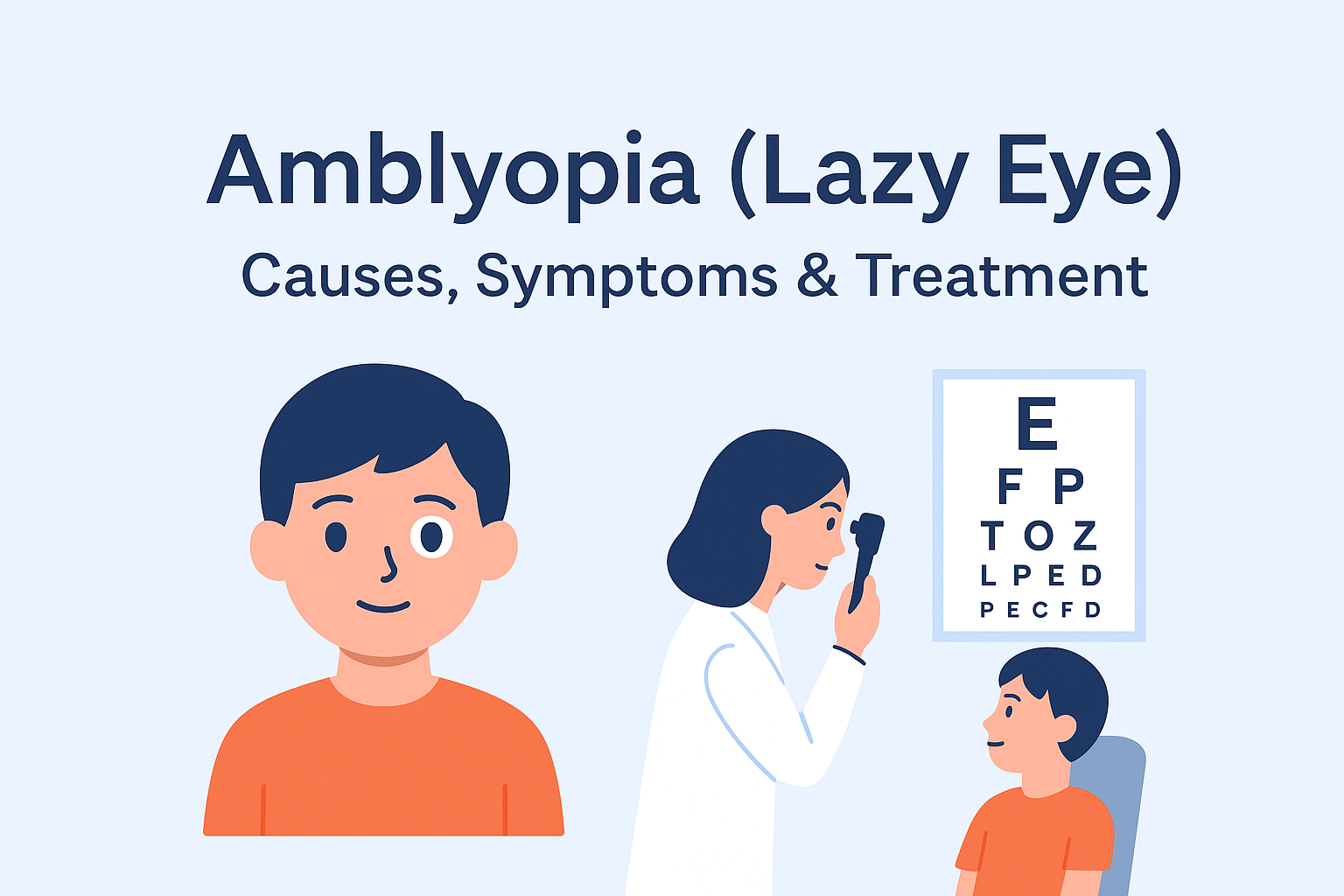
What is Lazy Eye (Amblyopia)? Causes, Symptoms & Treatment
The term amblyopia refers to a condition, commonly known as a lazy eye, which is one of the most common types of disorders in pediatric ophthalmology concerning children. It refers to the eye that loses its vision potential as a result of failure to develop certain visual functions during the early developmental stages of childhood. An amblyopia eye can never see rationally with the use of eye-sight improving glasses or lenses. It is estimated that about 2 to 3% of children around the globe are suffering from one of the common types of amblyopia eye diseases.
Understanding the causes, risk factors, symptoms, and potential treatments for amblyopia remains crucial. The condition can become a particular problem for children at the age of seven, whose vision, if deemed correctable, can be significantly improved with known treatments.
|
Content of The Article |
What Is an Amblyopia (Lazy Eye)?
An amblyopia eye is an eye that has reduced vision with no obvious structural aetiology, in which there is a disruption in the communication of the eye and the brain. In this scenario, there is a brain dominance whereby one eye is suppressed. With time, this eye becomes the weaker eye because the total visual blindness is developmentally imbalanced. Medical term: Amblyopia
- Layman’s term: Lazy eye
- Impact: Lower levels of visual acuity, inability to judge distances
Amblyopia is said to affect typically just one eye, although in very exceptional instances, both eyes could end up being amblyopia, particularly when the visual development of both eyes is disturbed.
Main Causes of Amblyopia in Children
An amblyopia eye may develop for several reasons. Some of the most common amblyopia causes are:
1. Strabismus (Eye Misalignment):
- A leading cause of amblyopia.
- Vision reduction is due to the brain eliminating input from the misaligned eye in order to avoid seeing double, which poorly functions in amblyopia.
2. Refractive Errors (Anisometropia):
- Occurs when one eye is far more hyperopic, myopic, or astigmatic than the other eye.
- In this case, the brain is said to favour the eye that appreciates clearer vision.
3. Deprivation Amblyopia:
- Amblyopia caused by cataracts, drooping eyelids, or a cloudy cornea that obstructs the passage of light to the eye’s visual centre during the crucial development period.
4. Mixed Mechanisms:
- A combination of strabismus and some refractive errors.
Other Causes Of Amblyopia?
- Family history of amblyopia or strabismus
- Weighing less than 5 pounds at birth
- Eye cataracts
- The inability to focus on a single eye, or both eyes
- Excessive eye patching
Knowing what causes amblyopia would allow pediatric ambitious to create reliable treatment plans to eliminate the disorder on time.
Risk Factors for Amblyopia Eye
Certain children are more likely to suffer from amblyopia eye disease. Common amblyopia risk factors would be:
- One or both eyes have a high degree of refractive error.
- Eyes with eye disorders, congenital cataracts, or having a drooping eyelid (ptosis).
- Entire history of amblyopia, strabismus, or more generally, eye disease.
- Falling Preterm or weighing less than 5 pounds at birth.
- Underdevelopments, or developmental delays
Children with these characteristics should be the first candidates to undergo a pediatric ophthalmology assessment to minimise the risk of irreversible vision problems.
Symptoms of Amblyopia (Lazy Eye)
The sooner symptoms of amblyopia are detected, the better the results are expected to be. A key characteristic of an amblyopia eye is:
- Consistently poor vision in one eye
- Squinting or closing one eye to see better
- Poor depth perception
- Misaligned eyes (strabismus)
- Tilting the head to compensate for weaker vision
- Frequent eye rubbing or visual fatigue
- Difficulty with reading, writing, or recognising objects
The most noticeable symptoms of amblyopia are typically identified by the parents and teachers, which is why screening for sight problems is so important.
How Amblyopia Is Diagnosed
The diagnosis of an amblyopia patient is done by pediatric ophthalmologists using in-depth eye checks for visual acuity, alignment, and refractive errors.
Usual Procedures Are:
- Children’s Vision Screening: Visual acuity assessment using eye charts designed for children.
- Refraction Assessments: Ascertaining the presence of nearsightedness, farsightedness, or astigmatism.
- Strabismus Assessment: Evaluation of eye muscles and alignment to determine strabismus.
- Eyelids Drooping: Examination for cataracts and opacity of the cornea.
The need for amblyopia assessment and early intervention is vital to prevent loss of vision in the amblyopia eye.
Treatment Options for Amblyopia in Children
An effective course of action for amblyopia eye treatment will depend on the age and the severity of the condition. The objective is to make the brain coordinate better with the weaker eye.
Common Treatment Methods:
Corrective Lenses:
- The refractive errors are remedied with glasses or contact lenses, as well as assistance in focusing equally with both eyes.
Patching Therapy (Occlusion):
- The stronger eye’s vision is artificially reduced by covering and blocking it with a patch in order for the brain to dominate and use the weaker amblyopia eye as a strategy.
- Works best with babies and preschoolers who are under the age of 6 and subject to working with visual equipment.
Atropine Eye Drops:
- The eye with the weaker vision is used to encourage the use of the amblyopia eye by temporally blurring the vision of the stronger eye.
Treatment of Underlying Causes:
- Surgical removal of cataracts;
- Correcting droopy eyelids (ptosis);
- Severe cases of Strabismus are aligned using strabismus surgery.
Vision Therapy:
Specific sets of exercises aimed at eye coordination to improve distance range as well as depth focus.
Lifestyle Adjustments:
- Active participation and activities such as reading with patching the eye to improve the vision to stimulate the amblyopia eye.
Importance of Early Detection & Pediatric Eye Care
The focus of pediatric ophthalmology includes the detection and treatment of amblyopia. Due to the reality that this condition will occur within the formative years, it has been suggested that vision screening be done:
- At birth, particularly to screen for congenital cataracts and structural defects of the eyes.
- During the period of 6 months to 1 year
- At ages 3 through 5
Whenever a child qualifies for amblyopia treatment, please note that the treatment plans that physicians are providing involve c, patching, and therapy exercises. These plans are tailored to improve vision as prescribed.
The Outcome of Not Treating Amblyopia
The condition of an amblyopia eye has a promising outlook, particularly with early intervention. A child under the age of seven tends to gain a significant amount of vision. If the condition is not treated and the child enters adulthood, they will not be able to gain vision as treatment will stop working, for the connection between the brain and the eye is fully formed.
- Early treatment with constant monitoring tends to yield the best results.
- Head start capability blocked by lack of practice, low compliance with treatment, and no motivation to recover.
Amblyopia is not the Only Avoidable Vision Loss
The treatment of amblyopia has proven that vision can be saved, though every case is different.
What can be done?
- Vision screening appointments and assessments are done by a paediatrician.
- Timely surgery for cataracts, eye injuries and lift surgery done on the top eyelid.
- Glasses for refractive errors.
- Encourage parents to monitor the child closely, especially if he has a family that suffers from strabismus or amblyopia.
Living With Amblyopia: Tips for Parents
Children who have an amblyopia eye can have problems in school and in daily, everyday vision and depth perception tasks. Children who have these types of problems and these types of possibilities and these problems and these and these types of problems and types of these and types of these types and types of each of these problems and these lack types and tasks of problems should work on:
- Support the school and reading work.
- Try to help expand the vision.
- Gentle support when the child does not cooperate with patching therapy.
- Talk to the other teachers at the school.
Also Read: Myopia (Nearsightedness) in Children: Symptoms, Causes, and Treatment
Conclusion: Preventing Vision Loss from Lazy Eye
An amblyopia eye, also referred to as a lazy eye, is characterised by a particular vision illness resulting from an impaired coordination of the brain and the eye during formative years. Grasping the amblyopia’s causes, noticing the amblyopia symptoms, and the risk factors are critical in the management of the problem. With respect to amblyopia eye treatment, most children will, with patching, atropine eye drops, corrective lenses, and eye surgery, gain functional vision.
In most cases, children will, after treatment and diagnosis, gain functional vision. Pediatric ophthalmology is a crucial subspecialty on the other hand in describing and governing this ophthalmic disease of amblyopia, with the goal of vision improvement in children. Amblyopia can be corrected through proper AMB with child and parental awareness, school routine screenings, and compliance with treatment, which will for the child bring back confidence and quality of life.
FAQs: Common Question About Lazy Eye
Children should be screened as early as 6 months, then again between ages 3–5. Early detection improves treatment success.
If treated early, amblyopia can often be reversed. Treatment is less effective after age 7–8 when the visual system fully matures.
Most cases affect one eye, but both eyes can be amblyopia if vision development is delayed in both.
Treatment duration varies but often requires several months of daily patching and regular follow-ups.
Yes, untreated amblyopia can lead to lifelong poor vision and depth perception issues.

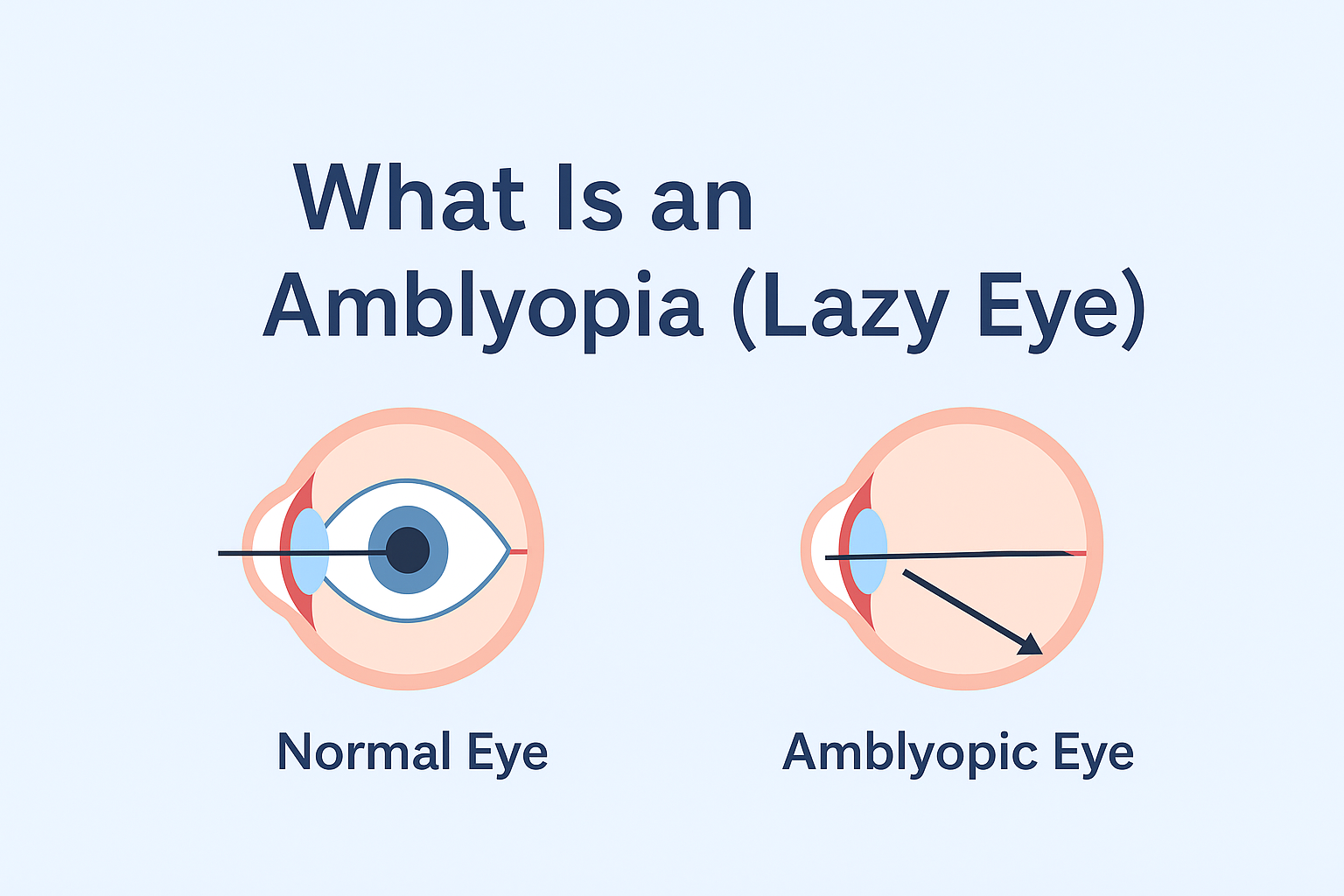
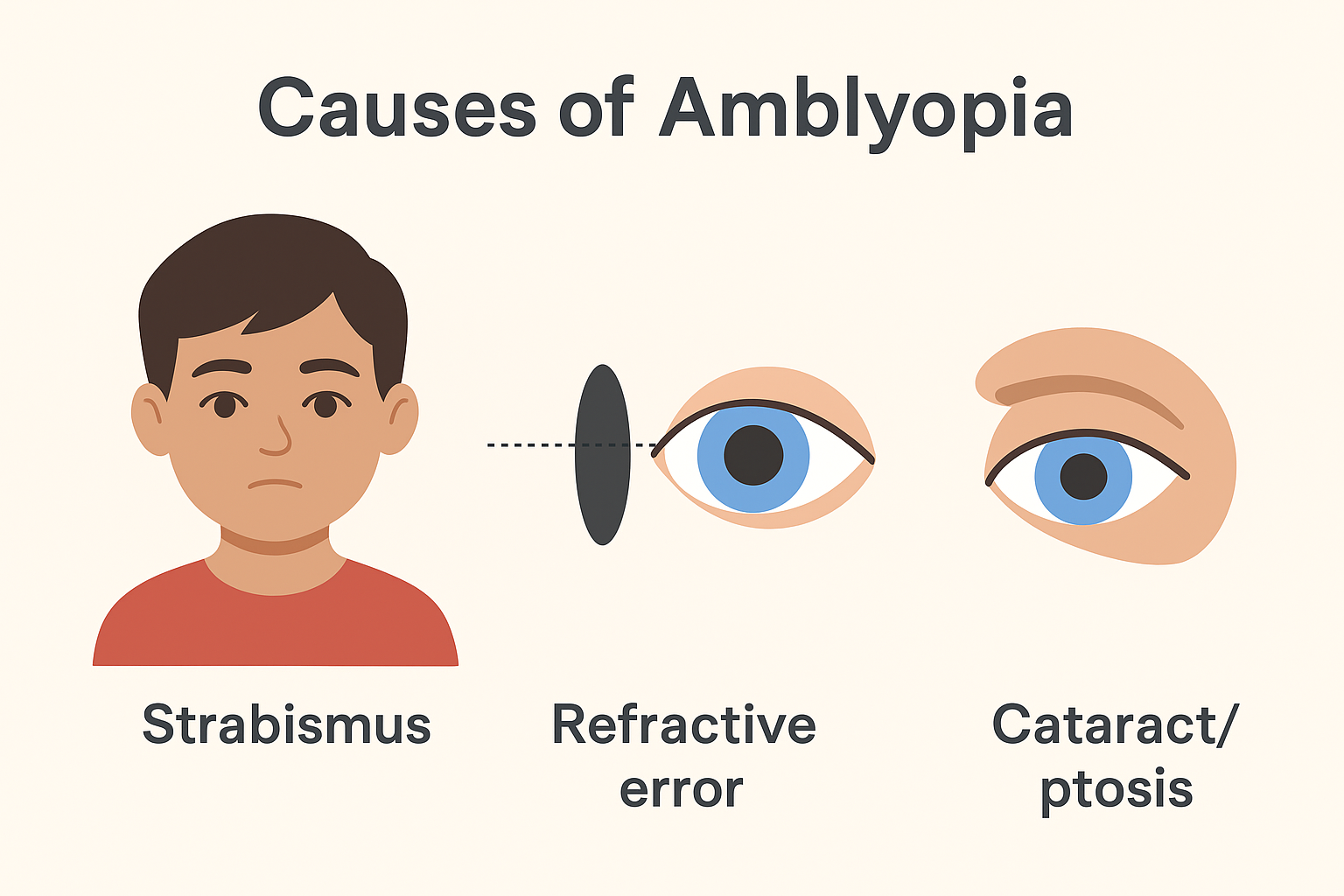
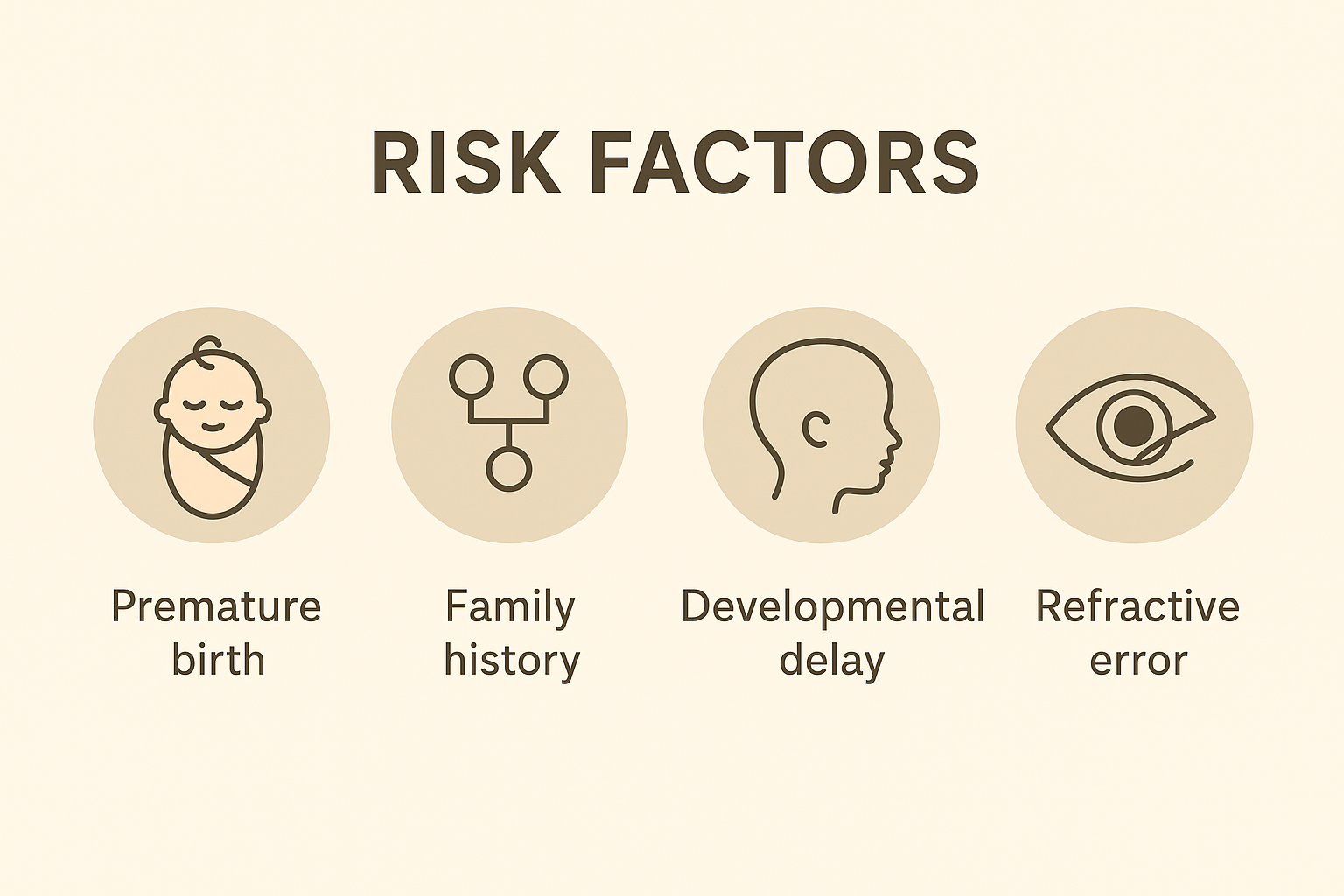
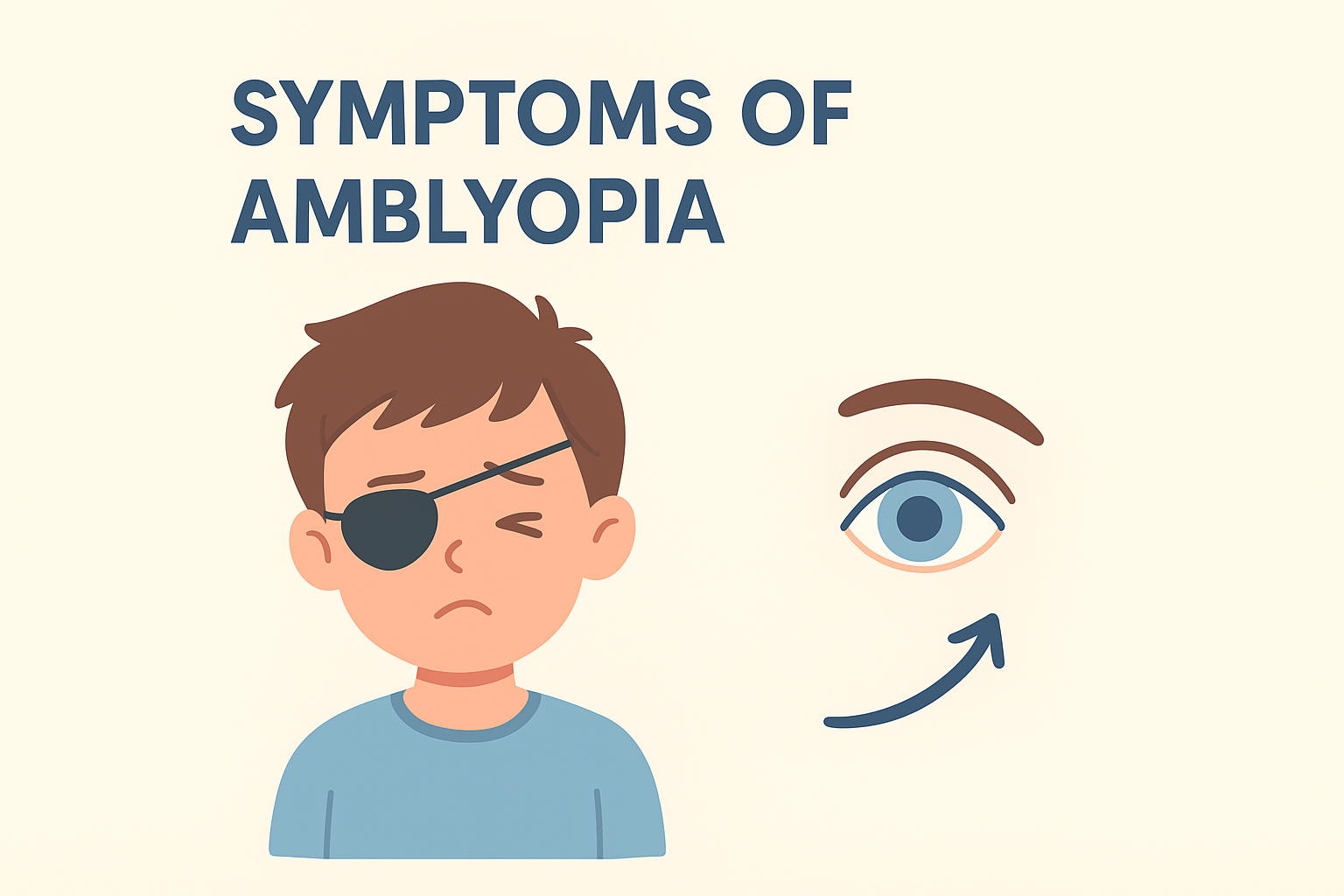
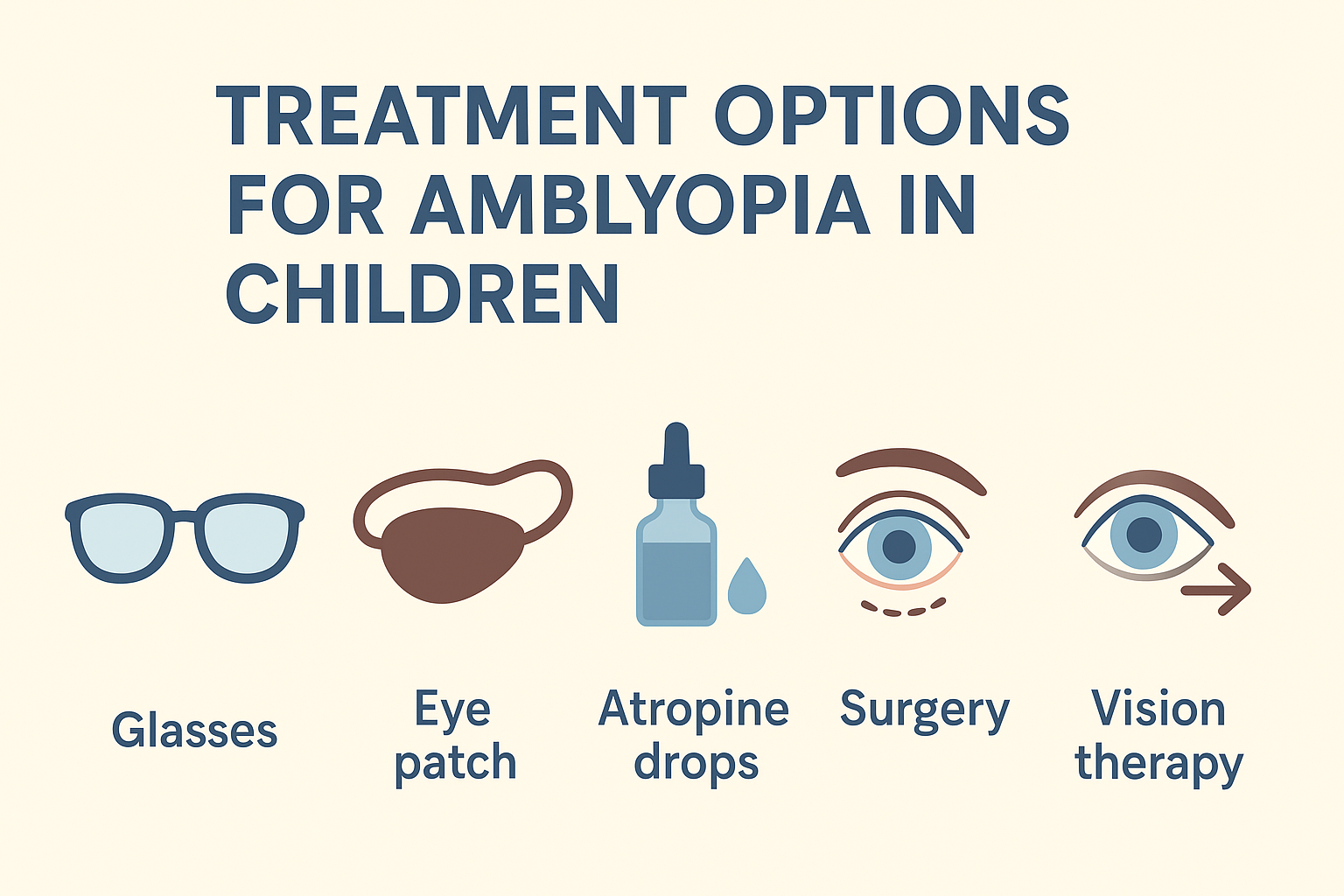
Leave a Comment
(0 Comments)